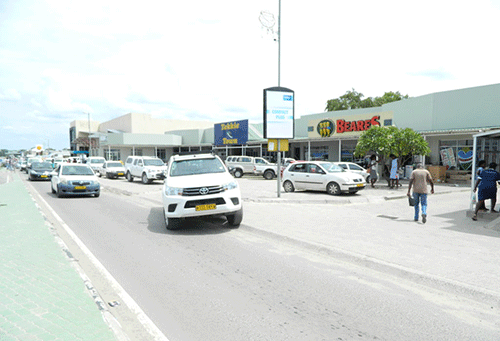The strategic location of the Zambezi regional capital Katima Mulilo has once again come to the fore due to its tremendous developmental potential as a regional logistics hub, particularly as the African Continental Free Trade Area (AfCFTA) agreement is gaining traction.
This as the United Nations (UN) recently urged African countries to scale up efforts in taking advantage of the single continental free trade market.
“Advantageously positioned, Katima Mulilo is the terminal town of the Trans-Kalahari Corridor, a highway together with its extension to Zambia (the bridge to Sesheke), Ngoma border post into Botswana (Kasane) linking Zimbabwe, South Africa and beyond,” said trade and industrialisation ministry spokesperson Elijah Mukubonda.
Responding to a New Era query, he observed that with an active road network, the town is seeing an influx of travellers that is enhancing a beneficial relationship to promote trade between Namibia, the region and beyond.
“The recent opening of the Kanzungula Bridge fortifies and renews the significant commerce and trade opportunities for Namibia to facilitate import and export opportunities. The Trans-Caprivi corridor via Katima Mulilo provides numerous routes connecting to neighbouring countries, allowing goods to move freely with ease through the road intermodal linkage to conveniently serve markets, including Botswana, Zambia, South Africa and Zimbabwe,” Mukubonda stated.
The town provides direct access to major road corridors strategically positioned as the transport hub for regional and international trade between Southern African Development Community (SADC) countries. Therefore, he noted, the strategic location of the town is significant in contributing towards deeper regional trade and integration of goods and services.
Moreover, Africa’s free trade agreement brings together 55 countries with a combined population of 1.2 billion people into a single market. The agreement aims to significantly boost intra-trade across Africa through the harmonisation and coordination of industrialisation and trade liberalisation. The expansion of markets is expected to provide African countries with larger markets for their goods and services to provide larger opportunities for investment across borders.
“The objectives of the AfCFTA are to create a single continental market for goods and services in the African Union member States, to encourage the free movement of business persons and investments using a single currency and to expand intra-African trade by ensuring better harmonisation and coordination of trade liberalisation and facilitation across countries and regions of Africa,” Mukubonda added.
Katima Mulilo is the capital of the Zambezi region, situated in the extreme north-eastern part of Namibia. Features that characterise the town include high literacy, good infrastructure such as roads, schools, hospitals and electricity as well as tertiary institutions. The town is strategically located along the banks of the Zambezi River which forms a border with Zambia. It also shares another border with Botswana, and has relatively easy access into Zimbabwe and South Africa.
Speaking on the final day of the annual Africa Dialogue Series in the United States recently, UN Secretary-General António Guterres highlighted the need to accelerate the implementation of the African Continental Free Trade Area.
He said the Covid pandemic resulted in high food and energy prices, which were worsened by the Russia-Ukraine conflict that exacerbated poverty, inequalities and food insecurity.
“Guided by the 2030 Agenda for Sustainable Development and the African Union’s Agenda 2063, we must ramp up our efforts and harness the full potential of trade and industrialisation to advance sustainable, inclusive growth,” said Guterres.
The UN chief added that AfCFTA is set to be Africa’s engine of growth. “Its full implementation could generate income gains of up to 9% by 2035, according to latest estimates. This would lift up to 50 million people out of extreme poverty and reduce income inequalities,” he continued.
The Secretary-General stressed that realising the AfCFTA will also boost access to financial resources and investment.
“We need a fundamental reform of the global financial system so that Africa is represented at the highest level,” he said.
Guterres noted that barriers which currently hinder intra-African trade and production capacities must also be broken down, including through eliminating tariffs, building “Made in Africa” supply chains, and harmonising regulations that would enable investment.
His third point focused on energy and digital infrastructure, which he said are vital for African countries to build their manufacturing capacities and harness the full potential of innovation and entrepreneurship.
“We need to power Africa’s industrialisation and leverage technology to leapfrog outdated infrastructure and head straight towards the fourth Industrial Revolution,” said Guterres.
He stressed that Africa is blessed with resources which could make it a leader in clean energy, adding that the sector could generate more than six million jobs by mid-century. However, he pointed out that Africa has received just 2% of global investment in renewables over the past decade.


